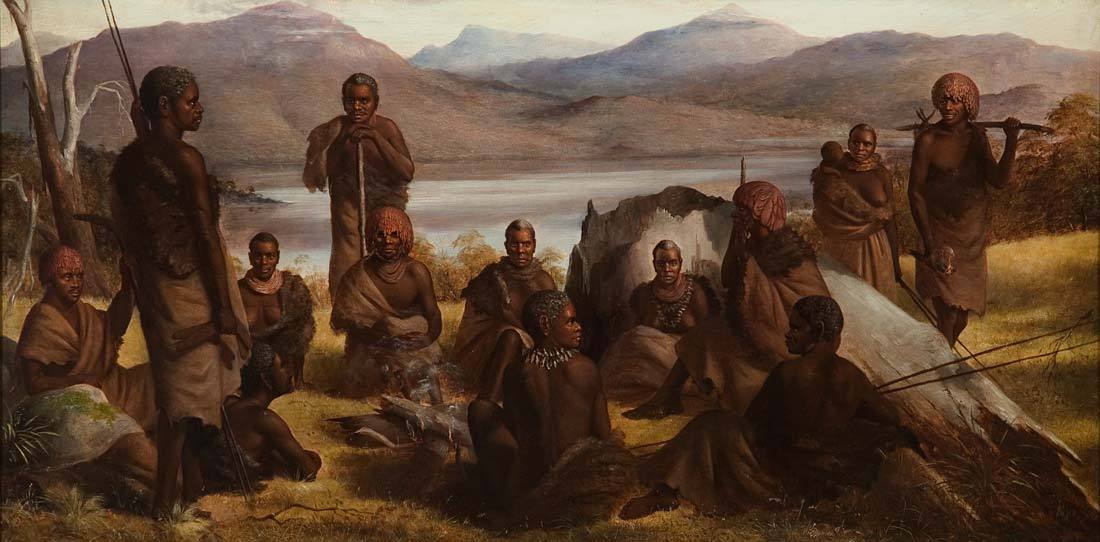Along with some of my physical anthropology students, I attended a public lecture on the Neanderthal genome given by one of the men who worked on the genome. An issue my students and I hoped the speaker would clarify is whether he considered Neanderthals a different species even though he admitted that EurAsians had some Neanderthal genes.
When one of my students asked about this, he stated that it was obvious they were a different species. “Look at my graph! It’s obvious!” However, it was not obvious. His graph compared the DNA (presumably nDNA rather than mtDNA, but he was unclear on this) of three Neanderthal females from the site of Vindija, Croatia, to the DNA of multiple individuals from different 21st century populations. There was a bit of a deviation of the Neanderthal lines from the non-Neanderthal lines, but the trend of the lines was the same. To further support his contention of different species, he said it was obvious from a comparison of the skulls of the two “species”. He then showed a comparison of a La Ferrassie Neanderthal with a current European skull. This same student said that differences were not obvious when comparing skulls from around the same time period that belonged to Neanderthal and so-called moderns. The speaker then began a jargon-dense explanation of a skull analysis technique that he felt proved his point. I let this slide because of the type of audience present, but I did e-mail the speaker after the talk. In that e-mail I noted that I’d been at conferences where one speaker using the technique he described ‘proved’ Neanderthals were a different species based on skull morphology, while the very next speaker, using the same technique and skulls, came to the conclusion that Neanderthals fell within modern human variation, and so were the same species as we are. He didn’t respond to this.
Back at the talk, another of my students asked the speaker how he could be so sure of his conclusions when he had only three samples and they all came from the same site; and, further, had not been compared to ‘moderns’ from the same time period. The speaker’s answer to this was not really clear, but seemed to be “Look at my graph! It’s obvious!” I also asked him about this in my e-mail. He responded that he saw no point in comparing to “moderns.” His comment: “We know that most of the DNA variation present within currently living humans dates back, on average, hundreds of thousands of years. Therefore, there is little to be learned from sequencing early modern humans. Nevertheless, this is being done anyway. In fact, there was a paper in Science last week
(http://www.sciencemag.org/content/336/6080/466.full) with DNA from several Neolithic humans. Unsurprisingly, they differ little from currently living humans.”
I replied that Neolithic humans lived thousands of years after Neanderthals (the time period in the article was about 5000 years ago) and were in the midst of one of the most severe selection events to affect humans due to the rise of contagious infectious disease among early agricultural populations, along with impaired nutrition due to restricted diets. As we are still living in this changed environment of infectious disease and poor nutrition, it is not too surprising that “they differ little from currently living humans.” Nor would it be surprising if they differed somewhat from Neanderthals, although that analysis was not done. However, the article does not really appear to support his point anyway. Four individuals were tested: three northern European hunter/gatherers and one farmer who appeared related to southern Europeans. What this article points to is that, as with the Neanderthal genome, a tiny sample is used to make huge generalizations.
To enforce his point during his talk that Neanderthals were a different species, he implied that they were stupider than ‘moderns’ by comparing Mousterian tools of 150,000 years ago to cave art of 30,000 years ago. In my e-mail, I reminded him of that fact that Neanderthals of 40,000 years ago were using Upper Paleolithic tools, and that the 10,000 years from 40,000 to 30,000 years ago is an extremely long time. My comments were:
“Think how much our culture has changed in the past 10,000 years. But even if you do not like that comparison, what about the Tasmanians who were isolated from the rest of the world for 10,000 years until found by Captain Tasman in the 1600s? When found, their material culture was hardly more complex than is true of chimpanzees. This, of course, says nothing about the complexity of the intangibles of their culture. Were Tasmanians less than human because they had so little? Certainly, many Europeans thought so since they willfully destroyed them. But I think you will agree that racism is not a good way to judge whether a group is truly human or not.”

His response to this: “I think it’s OK to be racist against Neandertals. It’s the least of the offenses we are guilty of committing against them. In seriousness, though, they are extinct.”
My response to him: “So you think it is OK to have racist views about extinct populations? Since the Tasmanians and Taino (among many other groups) are effectively extinct in the same sense that Neanderthals are extinct (i.e. their genes live on in current individuals, but their culture is gone), were (are) racist attitudes towards them OK? Isn’t it racism that was key to their extinction?” He did not respond to that e-mail. Perhaps he realized he had gone too far. Perhaps he was annoyed that I refused to accept his “obvious” evidence.


 ess of becoming bipedal, the larynx dropped into its current position in adults around 4.5 mya.
ess of becoming bipedal, the larynx dropped into its current position in adults around 4.5 mya.